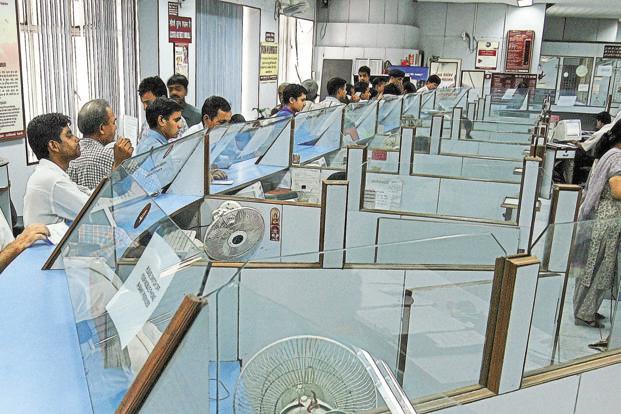The biggest negative for India’s state-owned banks in the Union budget is finance minister Arun Jaitley’s announcement that the government will infuse (only) Rs.25,000 crore in fresh capital in these banks—many of which are crumbling under the burden of bad loans.
Expectations were running high ahead of the budget even as analysts talked about trillions of rupees in capital to take care of the pile of bad loans as well as meet the new Basel norms which will kick in from April 2019.
However, the expectations were exaggerated and the budget has quite a few things that can bring cheer to the banking industry.
First, even though Jaitley has stuck to the Rs.25,000 crore figure laid out in August 2015 as part of a four-year road map which envisaged infusion of Rs.25,000 crore each into public sector banks in fiscal years 2016 and 2017 and Rs.10,000 crore each in 2018 and 2019, he has made it clear that if more money is required, the government will not shy away from its responsibility.
Properly distributed between growth capital and survival capital, even this amount may meet requirements for the time being unless there is a dramatic rise in credit demand. Many banks do not deserve to get dollops of capital from the government. They should simply stick to cleaning up their balance sheets and recovery of bad loans instead of giving fresh loans for which they would need more capital.
Second, sticking to Rs.25,000 crore recapitalisation funds and pegging fiscal deficit at 3.5% in 2016-17 is a smart idea (higher recapitalisation funds would have derailed the fiscal consolidation path) as this may encourage the Reserve Bank of India (RBI) to cut its policy rate sooner than later.
With the government respecting its commitment to fiscal consolidation and retail inflation trajectory in sync with the RBI’s target, I will not be surprised if the central bank goes for a rate cut even before its April policy. After two years of insufficient rainfall, we may have a decent monsoon this year to take care of the food inflation which is a big worry for the central bank.
Third, the quantum of market borrowing for the next fiscal year is a big positive for the bond market. While the expectations were for about Rs.6.4 trillion gross market borrowing by the government to take care of its fiscal deficit in 2016-17, the actual figure is Rs.6 trillion. Net of redemptions of old bonds, the net borrowing for the year is Rs.4.25 trillion.
Bond yields dropped after presentation of the budget. If indeed RBI goes for a rate cut in March, the yield will drop further. This will boost banks’ treasury income which will come in handy to take care of their rising bad assets in the March quarter. Banks are required to set aside money or provide for bad assets.
Fourth, Jaitley’s commitment to place a comprehensive bankruptcy code in the budget session of Parliament is another piece of good news. This will help banks in the recovery of bad assets as they will be able to fight the recalcitrant corporate borrowers with vigour.
Fifth, allowing sponsors to hold up to 100% in asset reconstruction companies (ARCs) will also help tackle bad assets. Currently, foreigners can hold up to 100% in ARCs but an individual foreign entity cannot hold more than 49%. A sponsor is someone who holds at least 10% stake in an ARC. By allowing the sponsors to have 100% stake, in effect, the government is allowing a single foreign entity to have 100% stake. This will encourage many foreign entities that have been waiting to take the plunge and address the capital problem of ARCs.
Sixth, by announcing that the government is willing to pare its stake to 49% in IDBI Bank Ltd, Jaitley has made a political statement. In future, we may see a similar approach towards public sector banks even though it may not happen soon. For the time being, the government will continue to hold the majority stake in public sector banks.
Jaitley spoke about consolidation in the sector but hasn’t clarified what exactly he meant by that. I hope this does not mean forcing a relatively stronger bank to embrace a weak bank for merger. Oriental Bank of Commerce has for long paid the price for taking over Global Trust Bank Ltd. That experiment should not be repeated even within the circle of government-owned banks.
Seventh, the banking industry in general also should cheer the formation of the monetary policy committee which will oversee the central bank’s policy rate movement. The proposed committee will have six members—three appointed by RBI and an equal number nominated by a outside selection committee. The RBI governor will have the last word in the form of a casting vote in case of a tie. This puts to rest all speculation about RBI losing its autonomy and the government deciding on interest rates.
Finally, one must take into consideration the setting up of the Banks’ Board Bureau along with the Union budget to appreciate the government’s stance on public sector banks. The board could not have a better boss than the former comptroller and auditor general Vinod Rai. Other members are well chosen and the team could play a seminal role in overhauling the governance structure in public sector banks which many blame for the mess these banks are in.



